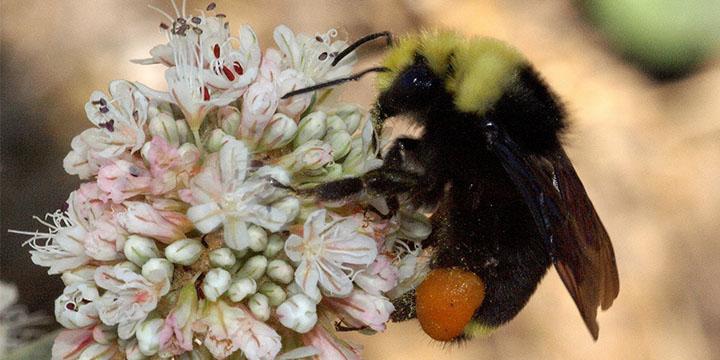Feb 2, 2017
Discovery of the Month: The Presidio is for Bee Lovers
Learn from academics and ecologists about about bees in the Presidio.
The Yellow-Faced Bumble Bee (Bombus vosnesenskii)
To glimpse what San Francisco was like 150 years ago – a time when much of the city was wind-swept and covered with sand dunes – take a walk along the Presidio’s Lobos Creek Valley Trail. Here you’ll find native plants, birds, and perhaps the largest population of bee species in the city.
Honey Bee vs Native California Bees
While the honey bee generally gets the lion’s share of attention, there are 1,600 bee species native to California. At least 64 of these live in the Presidio (the non-native honey bee came to California from Europe around the time of the Gold Rush).
We talked to Dr. John Hafernik, Professor of Biology at San Francisco State University and Director of ZomBee Watch, about bees in the park. “There’s a lot more than just the honey bees out there,” he said. “Of course the honey bee is important for agriculture, but we also have a rich diversity of native bees in California, and many of them have really interesting life histories and ways of surviving.”
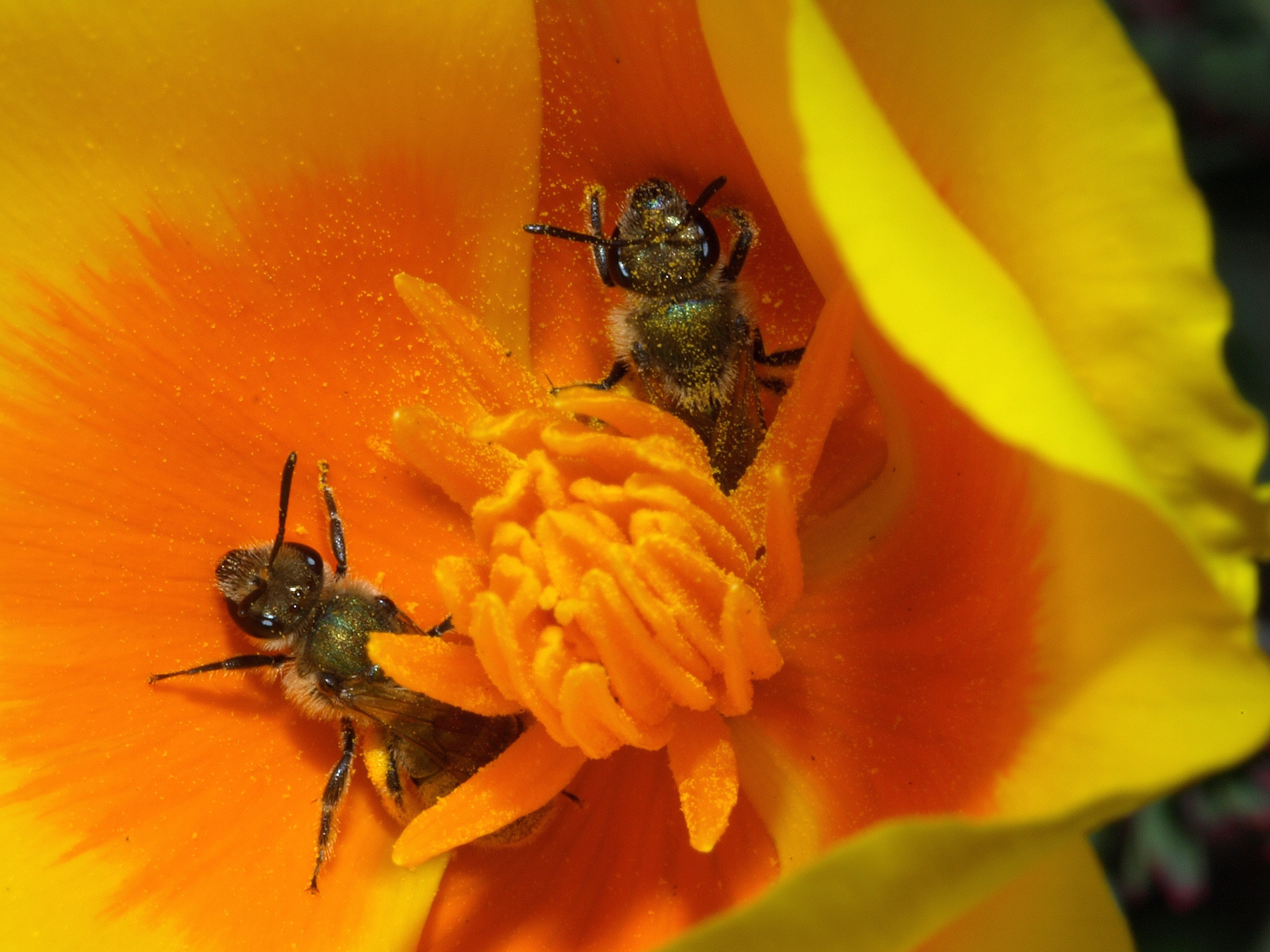
Two Sweat Bees in a Poppy at Lobos Dunes
John was involved with two bee surveys in the Presidio – one conducted in 2004 and the other in 2009. They found that in areas in the Presidio where the habitat was being restored, such as Thompson Reach, bee diversity had increased, especially after the Tennessee Hollow Watershed was restored. “This is why it’s important to establish benchmarks, especially since we’re concerned about the effects of climate change and changes in habitat,” John explained. “With this data, we can measure how changes in the environment can impact bee populations.”
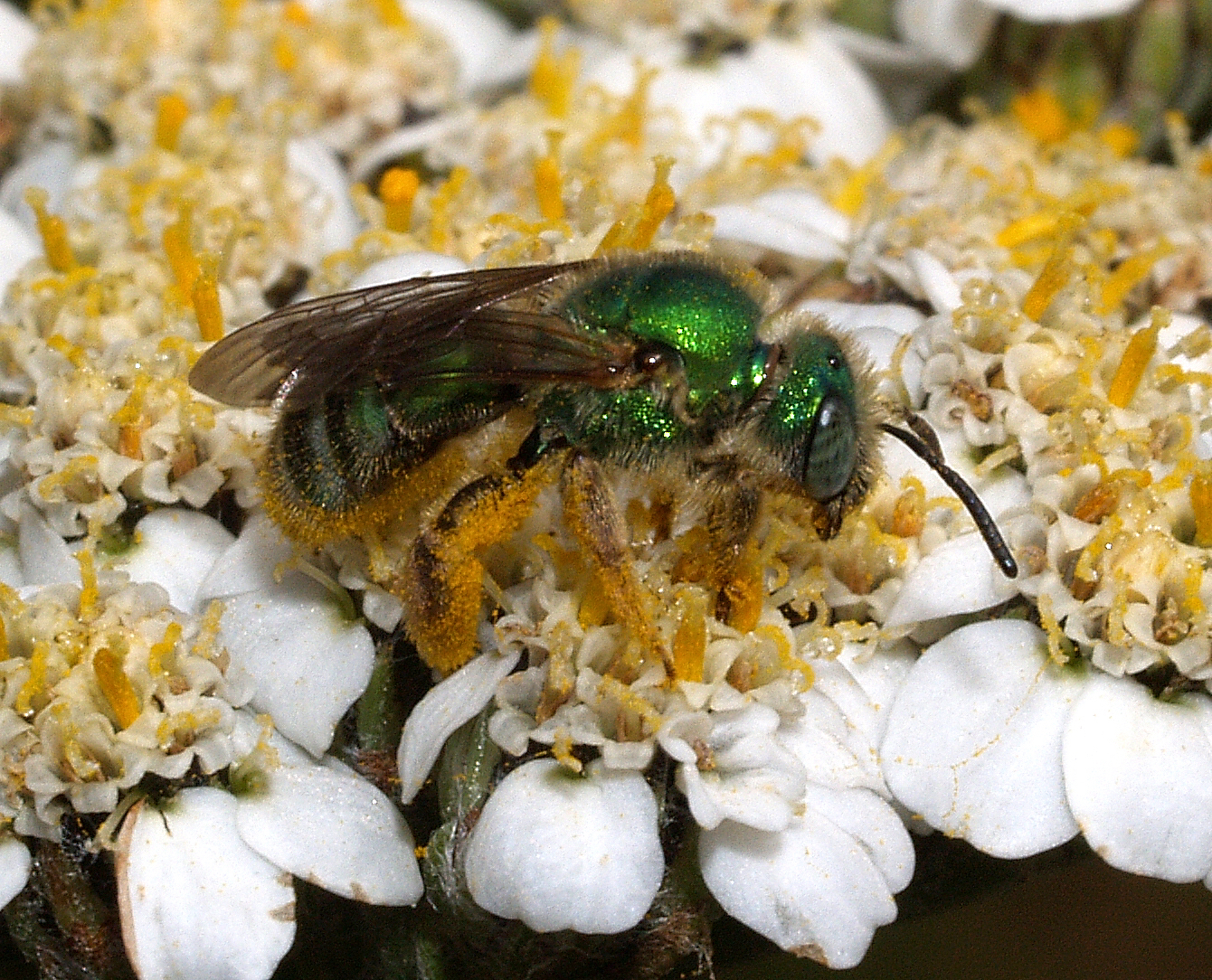
Green Sweat Bee (Agapostemon texanus)
Which begs the question, why would anyone want to go where lots of bees are hanging around? For one, simply looking at John’s photos tells us that many species are quite beautiful to behold, such as the fuzzy, yellow-faced bumble bee (Bombus vosnesenskii) and the bright iridescent green sweat bee (Agapostemon texanus – shown above).
Bee Stingers
While all bees have the structures to sting, many don’t have the ability to penetrate human skin and are actually, quite docile. Honey bees on the other hand do have a barbed stinger, which kills the bee after the stinger is lodged in a victim’s skin. But the honey bees’ stinger has evolved in a way to “make life miserable for the honey bee,” John said. In protecting the hive, “worker honey bees die, so ultimately the individual in hive culture is expendable.”
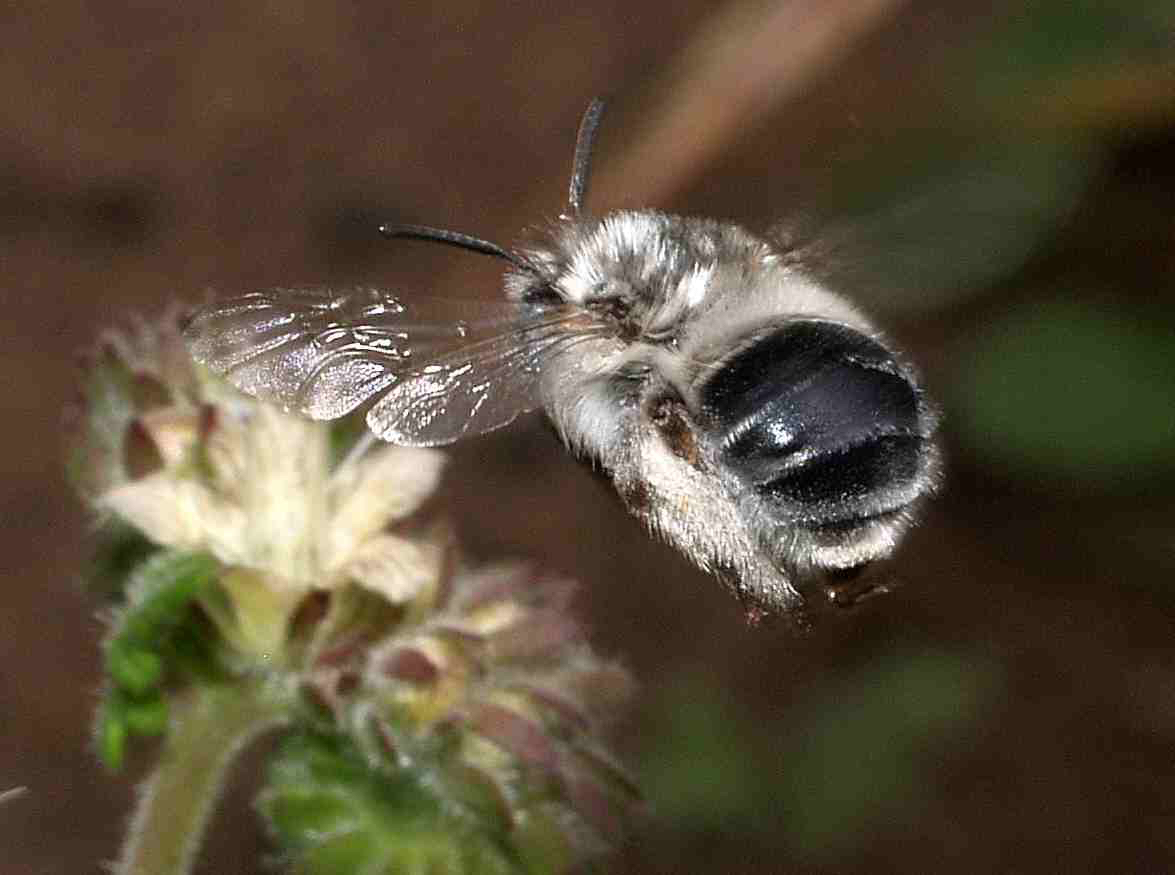
Digger Bee (Habropoda miserabilis) in flight
Bees and the Ecosystem
Bees are a critical link in the ecosystem for plant reproduction and act as the primary pollinators of many plants in the Presidio. We have flowers that exist to attract pollinators, and flowering plants have co-evolved with bees over millennia so that when a bee collects nectar and pollen from a flower, pollen from the stamens (the male reproductive organs of the flower) stick to the hairs of the bee’s body. At the next flower, some of the pollen might get rubbed off onto the flower’s stigma (the flower’s female reproductive organs), allowing fertilization to happen.
The bees, on the other hand, thrive on the flower’s pollen and nectar, and combine the two into a sticky substance informally known as “bee bread” that forms a balanced diet for their larvae.
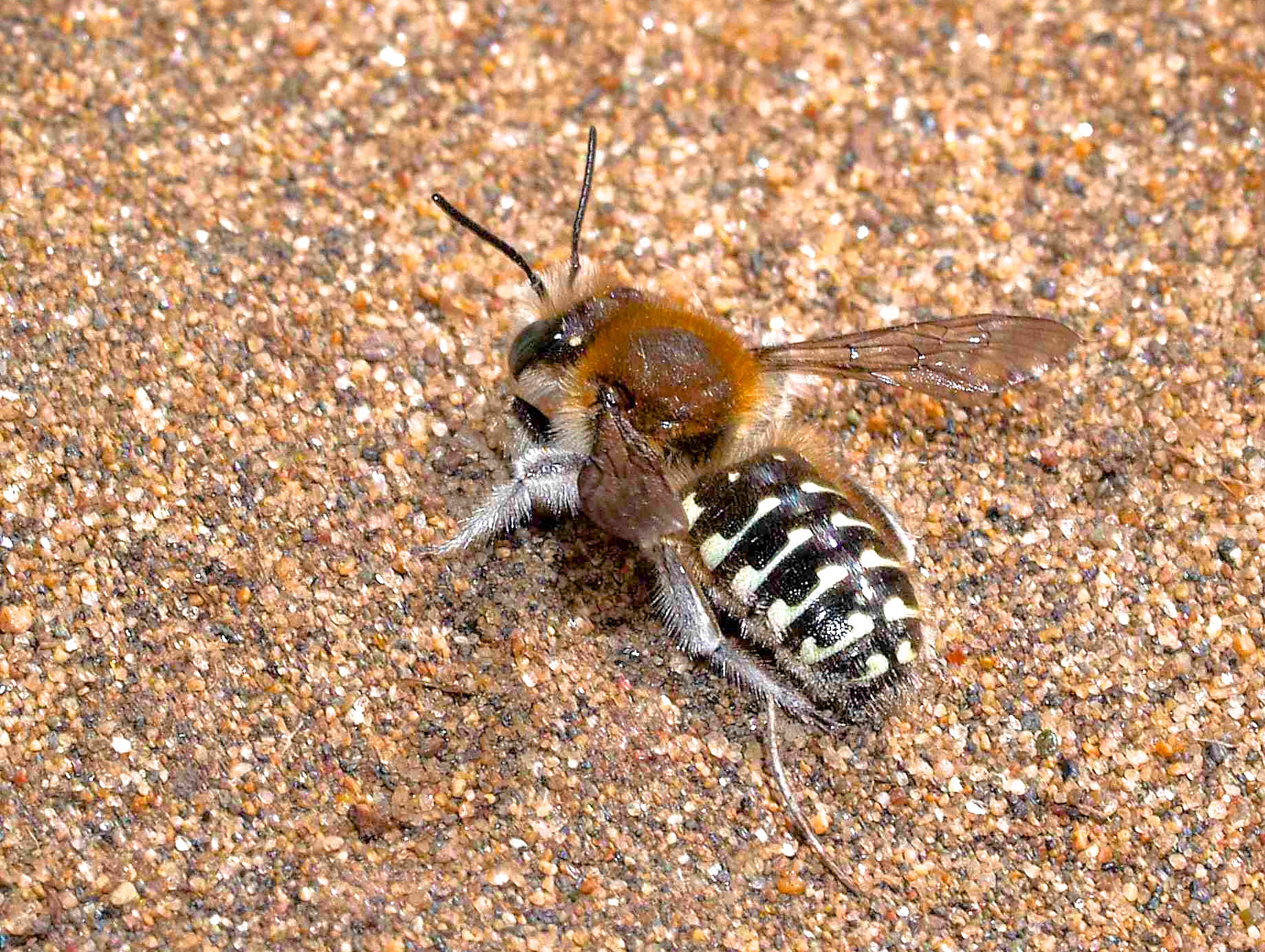
Carder Bee (Anthidium pallliventre)
When and Where to Find Bees
Unlike the honey bee, which is a social creature and lives in colonies, most bees are solitary and nest in sandy spots like the Presidio’s Lobos Dunes. Bees need moisture to thrive, and sand dunes wick up water – and with San Francisco’s plentiful fog, there’s a regular renewal of moisture in the ground after winter rains.
But no matter the season, you can see bees throughout the Presidio – most notably from the end of February though early fall. Spring is also a good time to see queen bumble bees zipping around the park as they gather pollen and nectar to start new colonies. So now is a good time to head out into the park and spot our many bee species.
All photos courtesy of John Hafernik
